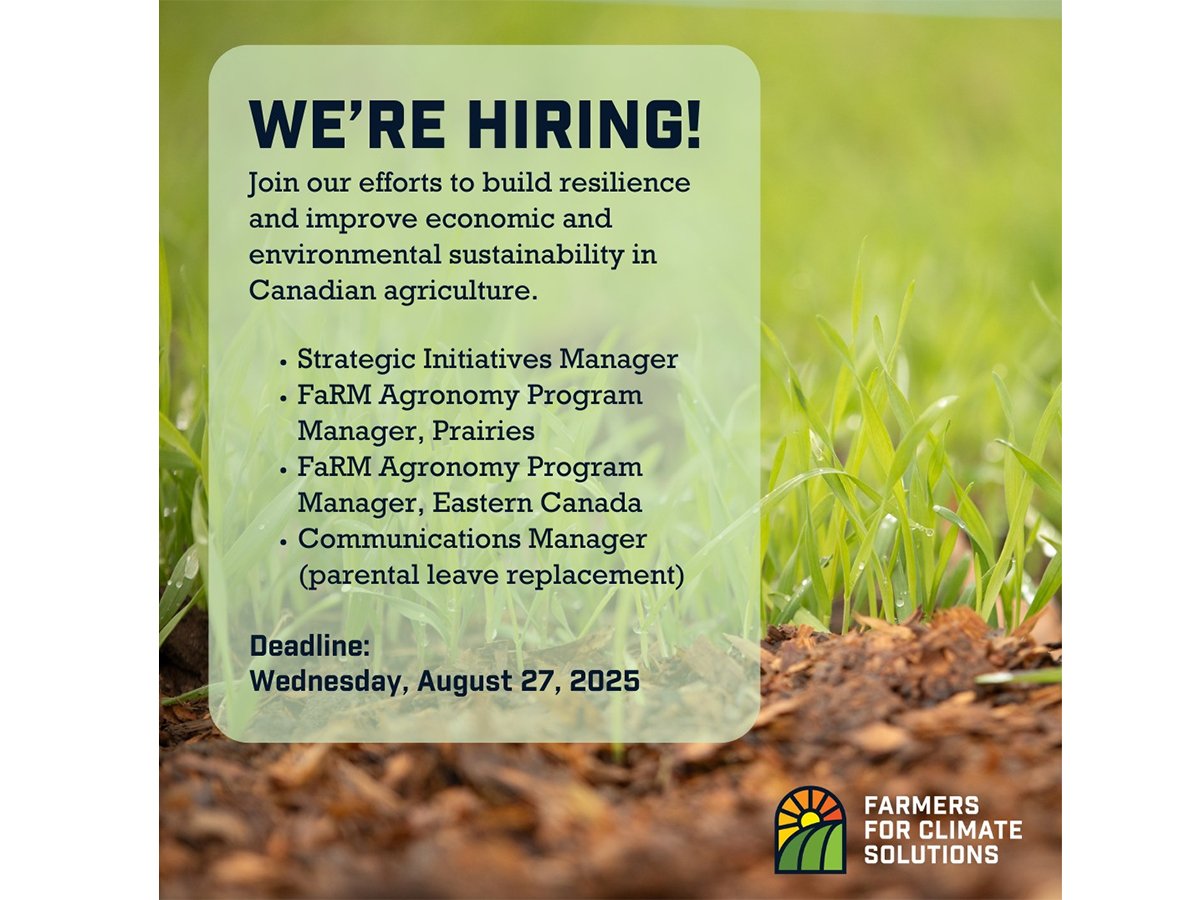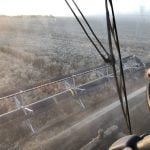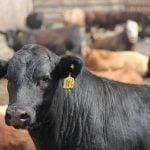Husky’s 200,000 litre oil spill in the North Saskatchewan River hits close to home in an age of heightened concerns about oil transportation, whether by pipelines, rail cars or tankers as well as the environmental consequences of vast oilsands tailing ponds created at the sites of bitumen extraction.
In addition to remedying the water supply for affected communities, untold resources will be spent on containment and cleanup.
Perhaps the most poignant images to emerge from this catastrophe are those of wild birds coated in a thick black layer of oil. Oiling of wildlife is an all-too-familiar consequence of oil spills, especially when these occur in wetlands, rivers and the ocean.
Read Also

Environmental farm group has Ottawa’s attention
In 2021, Farmers for Climate Solutions published a report on how Canada should reduce emissions from agriculture. Not long after, the federal government implemented most of the recommendations in the report.
The immediate effects of oil on animals are two fold:
- Floating oil is a hazard to birds and mammals that use the waterway immediately following spills. Oil coats and slicks down the feathers, thereby reducing the small insulative air pockets created between normal feathers and breaking their water-tight seal.
The loss of insulation and water proofing prevents them from regulating their body temperature, causing hypothermia. Similar effects occur when mammals, such as otters, become coated in oil.
Animals can also die from smothering and drowning.
Depending on the type of oil that is spilled, toxic effects can extend to eggs and lead to embryo death.
- The second effect is less visible but can also be important, de-pending on the toxic components of the oil that was spilled. Birds spend hours preening their feathers and will ingest oil through this behavior. They may also eat oil-coated food and breathe in small oil droplets.
The health effects from oil ingestion and inhalation include anemia from red blood cells bursting, diarrhea and pneumonia.
More difficult to quantify but just as important is the effect that a stressful event such as oiling can have on health and reproduction.
Birds and other animals caught in the middle of an oil spill are often gathered and treated at rehabilitation centres, where they are provided with food and water, cleaned and treated for injuries and illnesses.
Companies responsible for the spills spend thousands of dollars treating wildlife. Is treatment worthwhile, given the severity of illness that can occur with oiling? Do the treated animals survive? Do the number of affected animals matter in terms of the entire population?
Researchers are beginning to monitor the long-term behaviour and survival of treated wildlife to fill in some of these knowledge gaps.
For example, a 2015 study published in the Marine Pollution Bulletin followed oiled little blue penguins that were rehabilitated and released after the Rena oil spill in New Zealand’s Astrolabe Reef.
The researchers found no difference in food seeking and diving behaviour compared to unaffected penguins. This and other studies support the effort to rehabilitate oiled wild animals.
Experiences gained by treating common wildlife species such as geese and ducks may be vitally important if endangered animals such as whooping cranes find their way onto an oil spill. Saving a few individuals of an endangered species may be critically important to their population.
What about the long-term health consequences of oil spills on wildlife?
This question is difficult, if not impossible, to answer with any degree of certainty without accurate base line information on wild animal populations and health.
We can look to historical spills to provide some clues as to what is in store for the North Saskatchewan ecosystem in the years to come.
In 1989, the Exxon Valdez spilled 41.6 million litres of oil in Alaska’s Prince William Sound. Bird populations had still not recovered to pre-spill levels nine years later. Similar population effects also occurred in sea otters.
Perhaps more alarming, however, is that some bird species, including scoters, appeared to get worse rather than better in subsequent years.
There is sound evidence that long-term toxic effects of oil and substances produced by its breakdown affect ecosystems in complex ways.
Chronic exposure to substances that are sequestered in sediments and then released may contribute to poor health, reduced growth and reproductive failure.
This ocean ecosystem is vastly different from the North Saskatchewan River, but long-term studies of oil spills such as this one show that oil spills can have long-lasting and substantial effects on wildlife.
Only time will tell if this will happen in the North Saskatchewan River ecosystem.














